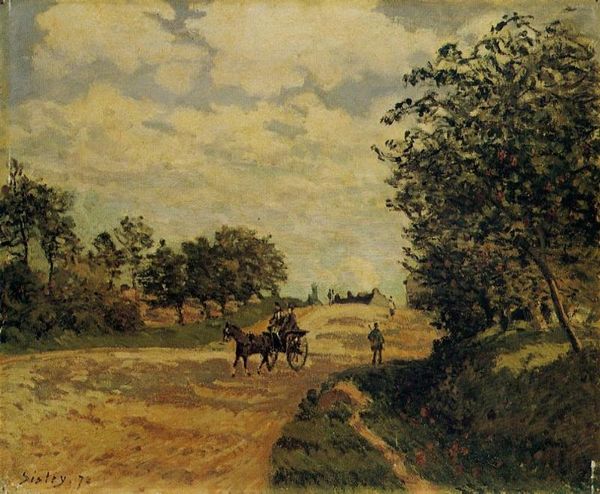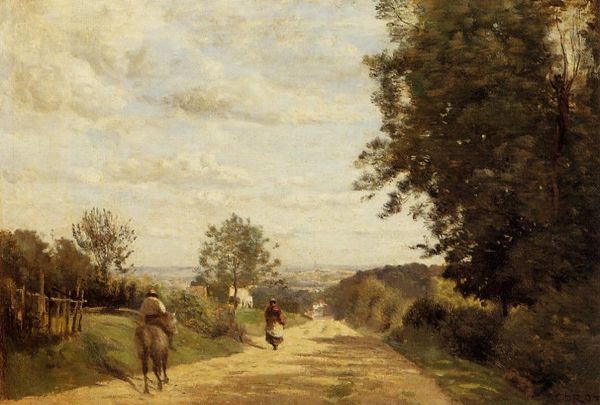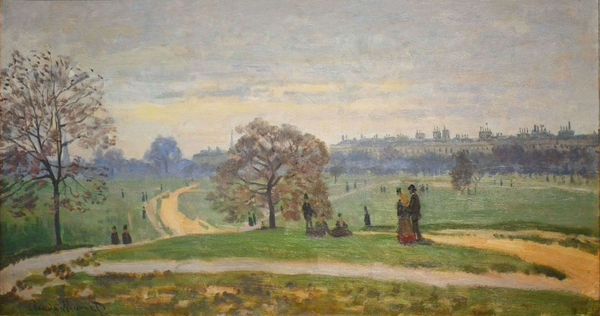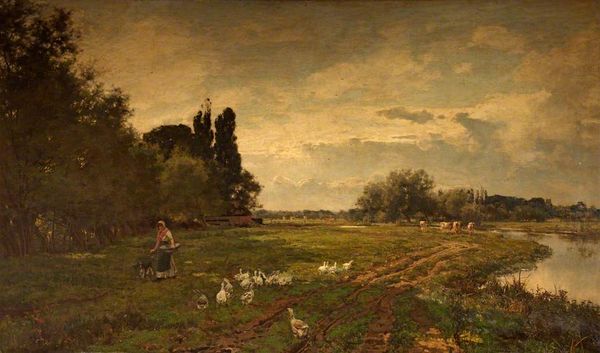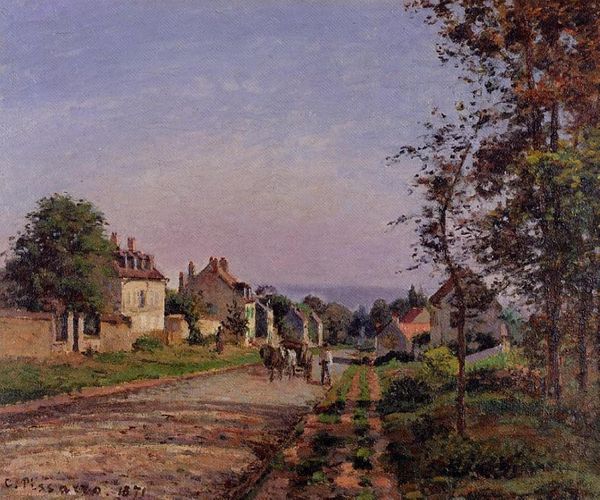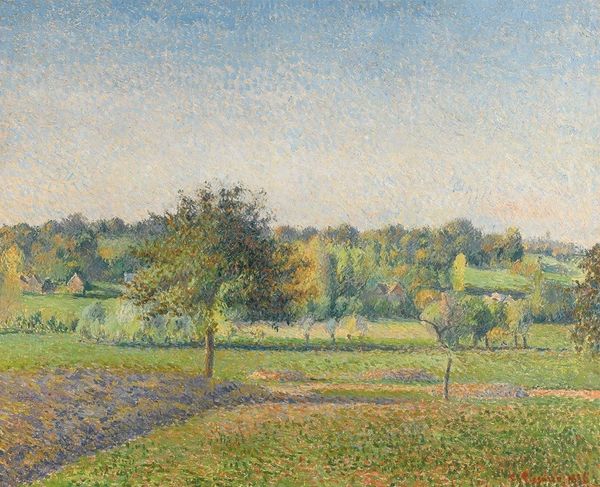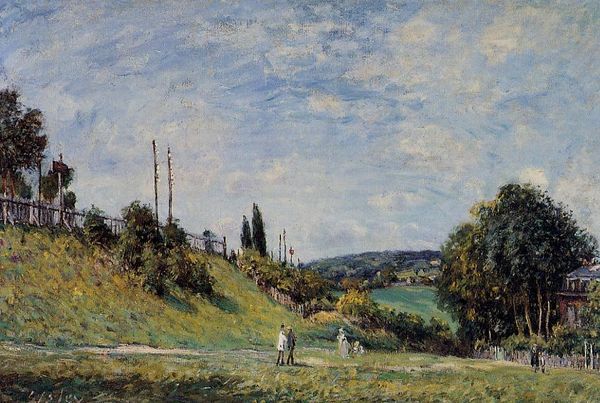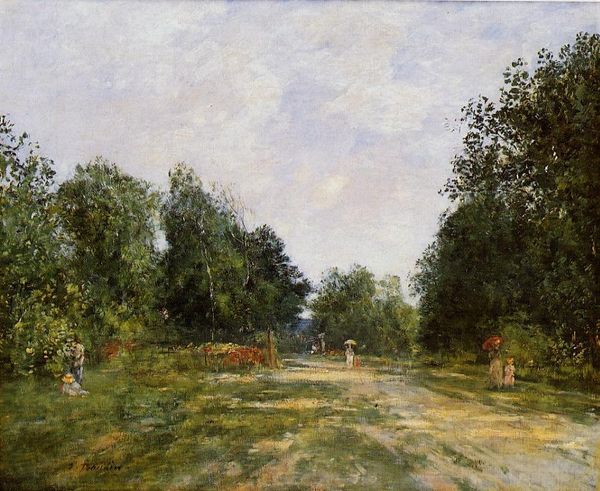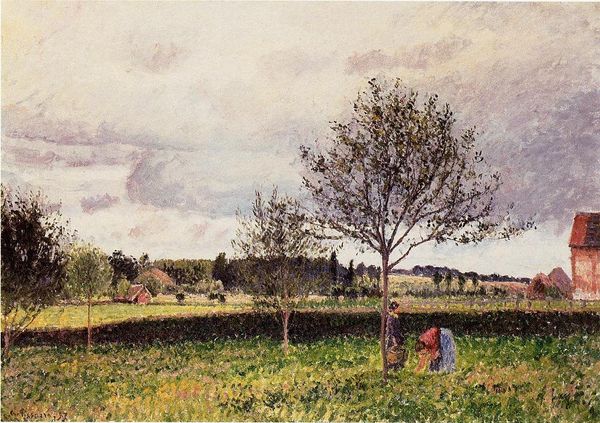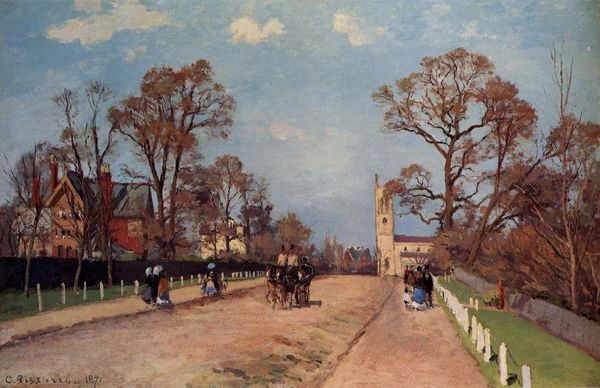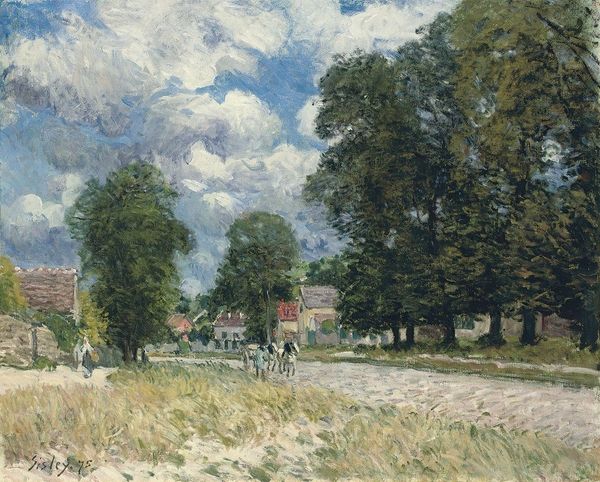
painting, plein-air, oil-paint, impasto
#
painting
#
impressionism
#
plein-air
#
oil-paint
#
landscape
#
impressionist landscape
#
oil painting
#
impasto
#
road
#
geometric
#
cityscape
#
natural environment
Dimensions: 38 x 55 cm
Copyright: Public domain
Curator: Let’s consider "The Route to Mantes" by Alfred Sisley, created in 1874, now residing at the Louvre. Sisley, a key figure in the Impressionist movement, captured this scene en plein air. Editor: Immediately, I'm drawn to the gentle curve of the road, how it slices diagonally through the composition. The subdued palette creates a quiet, almost melancholic atmosphere. Curator: It’s fascinating how Sisley, using impasto and subtle gradations of color, gives us more than just a physical location, conveying a collective experience and nostalgia tied to travel and nature. What can you read from his chromatic choice? Editor: There's an undeniable sense of light, even in this muted palette. Note how he uses short brushstrokes, pure hues applied side-by-side to depict fleeting light effects; it almost dissolves form in favor of color. The cool tones, especially in the sky, dominate the picture plane, emphasizing the ephemerality of the landscape. Curator: Beyond just a road, notice the historical context embedded within this rural route: what purpose the city gate and fence symbolize. The road to Mantes represented escape, change, connecting rural existence to industrial modernization during this period. It is meant to connect our past, present, and future selfs. Editor: That idea of transition is subtly expressed, but the very nature of landscape painting leans into that. But let’s think about the structural elements that are important, the artist's signature for example: the visible brushstrokes work together and offer not a mirrored reflection, but the effect of how light falls on a surface in a very short span of time. Curator: Indeed! By viewing art, one discovers cultural insights, values, and societal conventions: his art symbolizes liberation and hope. Editor: Absolutely, through his artistic gestures and formalist choices, the painting speaks to the essence of lived experience. It connects the viewer through form. Curator: A beautiful insight: Sisley painted not just landscapes, he gave future generations hope, and painted the promise of our personal development by connecting us all together. Editor: In his landscape art we understand the relationship between ourselves and the world around us; the very fabric of existence.
Comments
No comments
Be the first to comment and join the conversation on the ultimate creative platform.
